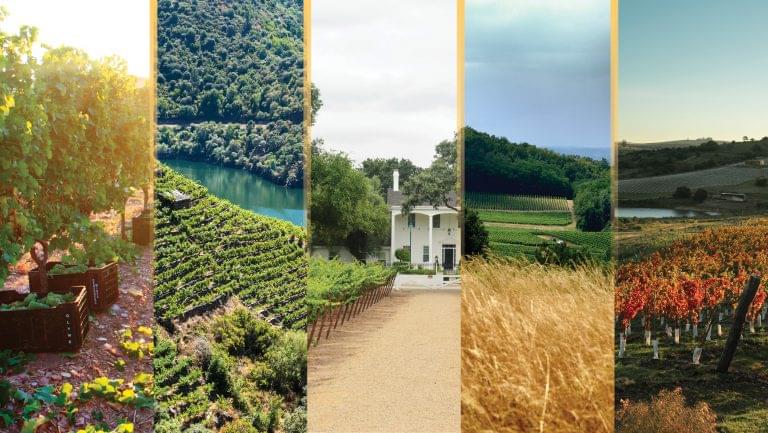For many on- and off-premise workers, the start of a new year marks a prime opportunity to upgrade wine lists and retail shelves. It’s a moment to reflect on last year’s sales, take stock of inventory, and map out the wines and regions to explore in the year ahead.
In many instances, beverage directors, sommeliers, and retailers turn to their importers to learn about up-and-coming regions and wines that can bring significant sales. After all, importers spend a lot of time scouring the planet for wines that fit the needs of the American market. But buyers at wine shops, restaurants, and bars know best what their customers are looking for; they are the ones hand-selling wines from new varieties and lesser-known regions, and if the buyers are excited about a particular wine from a specific region, chances are, their customers will be, too.
So, where are on- and off-premise pros looking in 2024? SevenFifty Daily asked wine buyers at U.S. wine shops and restaurants about the wine regions they’re most excited to sell in the coming year. For many buyers, what’s old is new again as they set their sights on wines from familiar places that are delivering a new edge.

Don’t miss the latest drinks industry news and insights. Sign up for our award-winning newsletters and get insider intel, resources, and trends delivered to your inbox every week.

South Africa’s Maritime Elim Region
South African wine has struggled to catch hold in the American market. There are plenty of reasons for this. Nonetheless, more wines from the country are slowly but surely trickling in, and buyers tapped into the wine industry are becoming increasingly aware of the quality- and value-driven wines of South Africa. And as appeal grows, wine buyers are exploring beyond Stellenbosch, South Africa’s largest and most notable wine region. “Elim on the south coast is a very interesting maritime area with one of the oldest soil compositions from a geological perspective,” says Adam Elliot, a Philadelphia-based sommelier with Sommsation, an online wine shop based in Pennsylvania.
Located at the southernmost tip of the Western Cape, Elim’s wine history was launched by German missionaries who settled in the region in the 19th century. Elim’s cool climate and soils, predominantly made up of decomposed granite and shale, result in white wines that display great tension and energy, like Sauvignon Blanc, the most-planted grape in the region. “I fell in love with the area when I tried the Trizanne Signature wines made by the South African native Trizanne Barnard. They have an amazing sense of place and, with one sip, can transport you to the coast,” says Elliot. Although white wines like Sauvigion Blanc and Sémillon make up the bulk of Elim’s production, the region is home to red varieties as well, including Shiraz, Pinot Noir, Cabernet Sauvignon, and a bit of Merlot.

Galicia’s Bright and Light Styles
As consumers look for lighter, fresher wines with lower alcohol, regions within Galicia in the northwest corner of Spain—areas like Ribeiro, Ribeira Sacra, and Valdeorras—have the potential to step into the spotlight. While the white wines of Rías Baixas are already in high demand, Galicia’s lesser-known regions are now stepping up because they specialize in red and white wine styles that are typically light in body, says David Weitzenhoffer, the CEO and founder of Community Wines in New York City. “We’re seeing a lot of consumers moving away from really high alcohol wines and more towards slightly higher acid and lighter wines that go with a variety of food. I think northwest Spain delivers on both those fronts.”
While Rías Baixas Albariño is nothing new for on- and off-premise professionals and many consumers, winemakers in Galicia are investing more time and resources into the other varieties of the region, particularly Mencía, Godello, and white blends that lean light and bright on the palate, but still have structure and focus. “It seems like now it’s not just about Albariño,” says Weitzenhoffer. “It can be about Godello. It can be about white blends or Mencía. There’s a real possibility for northwest Spain to make an imprint on buyers and consumers in a way that it hasn’t managed to in years past.”

Lodi’s Overlooked Small Producers
Despite having some of the oldest vines in California and a wine history to match, Lodi is mostly known for being a hotbed for mass-produced, commercial wines. That is starting to change as lower land prices attract young winemakers looking to make a name for themselves through high-quality, sustainable wines. Since the land is cheaper, producers have more wiggle room for experimentation, and they seem to enjoy dabbling in a wide variety of grapes.
“There are so many new plantings from people who are farming more responsibly and putting in grapes thriving in our new climate,” says Terra Jane Albee, the founder of Ownroot Collective, an online wine club based in California. “There are Spanish grapes. There are Portuguese grapes. There are Greek grapes. There’s southern French grapes.”
Wines from smaller producers like Perlegos Wine Family, Bokisch Vineyards, and Haarmeyer Wine Cellars are already becoming widely available in specialty wine shops and on restaurant wine lists across the U.S. Albee doesn’t see that dying down, especially since price points are more reasonable for small-production wines from Lodi. “That under-$30 price range is a pretty good exploratory price,” says Albee. “The fact that you can try something that’s small production, made by hand, and still quality really makes Lodi a place to look at.”

Castillon Côtes de Bordeaux’s Value-Driven Bottlings
Finding bottles of Bordeaux that hit high on quality and affordability is tricker than it might seem. However, a few lesser-known AOCs within the renowned French region are stepping out of the shadows with exceptional wines that won’t break the bank, like Castillon.
“Everything is a little less expensive, and when things are less expensive, you can afford to experiment,” says Jeff Harding, the wine director at Waverly Inn in New York City. Harding notes that winemakers in Castillon are stepping outside of tradition and producing more wines that fall in line with the lighter styles of red wine that are increasingly popular, like varietal Merlots that are juicy and fresh on the palate without compromising the integrity of the tannins.
“I [recently] discovered a nice handful of affordable, by-the-glass reds from Castillon, and one that really struck me was Château Le Rey’s Merlot. They don’t age in oak. It’s fairly fresh when they put it in the bottle, and the tannins are light,” says Harding. “That’s a newer style of Merlot that will influence more people to rediscover the variety.”

Uruguay’s Terroir-Transparent Wines
Wines from Uruguay have been relatively hard to come by in the U.S. However, as more importers are strengthening their portfolio of Uruguayan producers, on- and off-premise professionals are looking to add more bottles from the region to their inventory. With just 16,000 acres of vines covering Uruguay, the country produces about 10 million cases from 180 wineries annually, which isn’t a lot compared to more prominent countries like Argentina and Chile.
Still, more wine is popping up on store shelves and wine lists, changing the perceptions of what South American wine can be. As the fourth-largest wine-producing country in South America, vineyards can be found all over Uruguay. Its temperate climate featuring warm, dry summers and mild winters, and long coastline covering three sides of the country, make it an ideal growing region for a number of grape varieties—the most important of which is Tannat. Other varieties like Cabernet Sauvignon, Pinot Noir, Marselan, Albariño, and Chardonnay also thrive in Uruguay.
“The general idea people have about wines from the South is that they are big and tannic, over-extracted wines, but that’s not the case with the Uruguayan wines I’ve seen,” says Gabriela Davogustto, the wine director of Clay in New York City. “These are wines coming from small producers, family operations, and the wines are focused and well balanced. We often talk about stories of place when we’re selling wine, and I think getting to know a country like Uruguay, which is producing such high-quality wines, is invaluable.”

Dispatch
Sign up for our award-winning newsletter
Don’t miss the latest drinks industry news and insights—delivered to your inbox every week.
Janice Williams is a New York City-based freelance writer covering wine and spirits. Certified WSET Level II, her work has been featured in print and online publications, including Newsweek, Wine Enthusiast, VinePair, Uproxx, and Thrillist, among others. You can follow her work on Instagram @browngirldrinkswine and website janicewilliams.net.






